Termites are the most destructive insects in all plants. If you have termites on your property, there are a few things you can do to eliminate them: use natural or chemical control, solutions, and treatment.
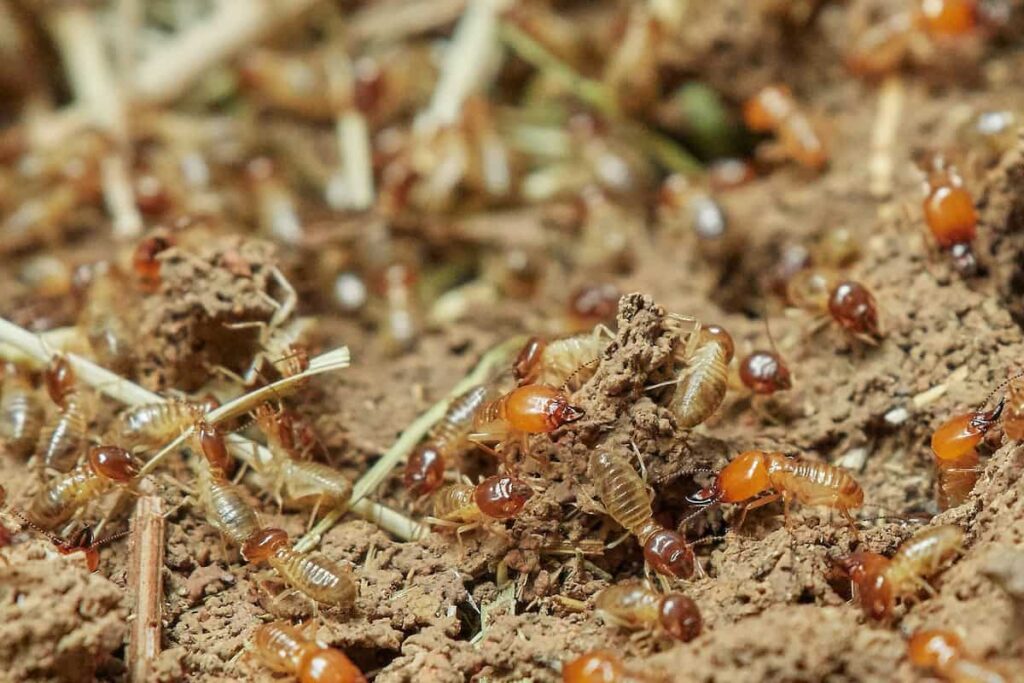
How to get rid of termites in soil and plants
What are termites in plants and soil?
Termites are an insect that lives in the ground. Termites eat wood, which is why they are called “wood-eaters.” However, termites also eat dirt, clay, and other materials. This allows them to create tunnels in the ground they use as homes. In gardens and other plant areas, termites can cause much damage. Termites damage crops and soil by eating the plant’s roots. Termites also create tunnels that disrupt the soil’s water and nutrient flow. In addition, they leave behind fecal pellets and cast skins, which can contain toxins that harm plants.
Tips to help get rid of them without damaging your plants
Check for evidence of termite activity
Signs that termites are present include activity around feeders, tunnels, and exit holes. Look for gnawed tree limbs, piles of dirt mounds, and linear soil trails.
Seal any entry points into your plant
This includes cracks in the foundation or around pipes and wires. If you can’t seal an entry point yourself, hire a professional to do it for you.
Use pesticides specifically designed to kill termites
Many options are available on the market, so choose the most effective for the type of pest you’re fighting. If you need to use a pesticide, make sure it’s labeled specifically for controlling termites or other pests. Always read the label carefully before using any pesticide.
Use organic methods to eliminate termites
One way to control termites without using chemicals is to use organic solutions. Add castile soap or baking soda to your garden or landscaping area to deter pests. Mix these solutions well before using them, so they don’t kill your plants.
How to identify termites in plants and soil?
Termites damage plants by gnawing on the bark and roots. These insects are attracted to moisture and food in the soil. Signs of termite damage include curled or distorted leaves, black, moist, and shiny soil, tunnels in the ground, and missing roots. There are several ways to detect termite activity.
You can use an insecticide spray to kill the insects that build their colonies inside or outside your home; you can look for their mounds (which are made of mud and earth) or nests, or you can listen for their chewing noises. Once you’ve determined that termites are present, the next step is to decide which control treatment is most appropriate for your situation.
There are several ways to identify termites in plants and soil:
- Inspect your plants for signs of damage. Look for elongated, dry sections of wood near the base of the plant where termites would typically infest. Also, check around roots where they may have entered the soil through cracks or openings. Damage from termites can be subtle, so it’s important to inspect several plant areas at once.
- Check surrounding soil for tunnels or mounds that haven’t been there before. Termites often excavate these formations when feeding on softwood lumber or other materials nearby. Hardwood timbers will resist this type of damage.
- Inspect untreated timbers and building exteriors for tell-tale evidence of termite activity: fecal pellets, chewed wood pieces, or chewed wallboard (often with characteristic dark brown streaks). These signs will disappear after a termite colony has eliminated all its food sources from an area.
- They can also damage gardens and lawns by eating the roots of plants. However, termites can often be controlled by using natural or chemical methods.
- If you think termites are causing damage to your property, the first step is to determine if they’re present. If you don’t see any evidence of termites, you may consider using a natural method to control them.
In case you missed it: Hydroponic Farming in the Philippines: How to Start, Cost, Profit, Crops, and Requirements
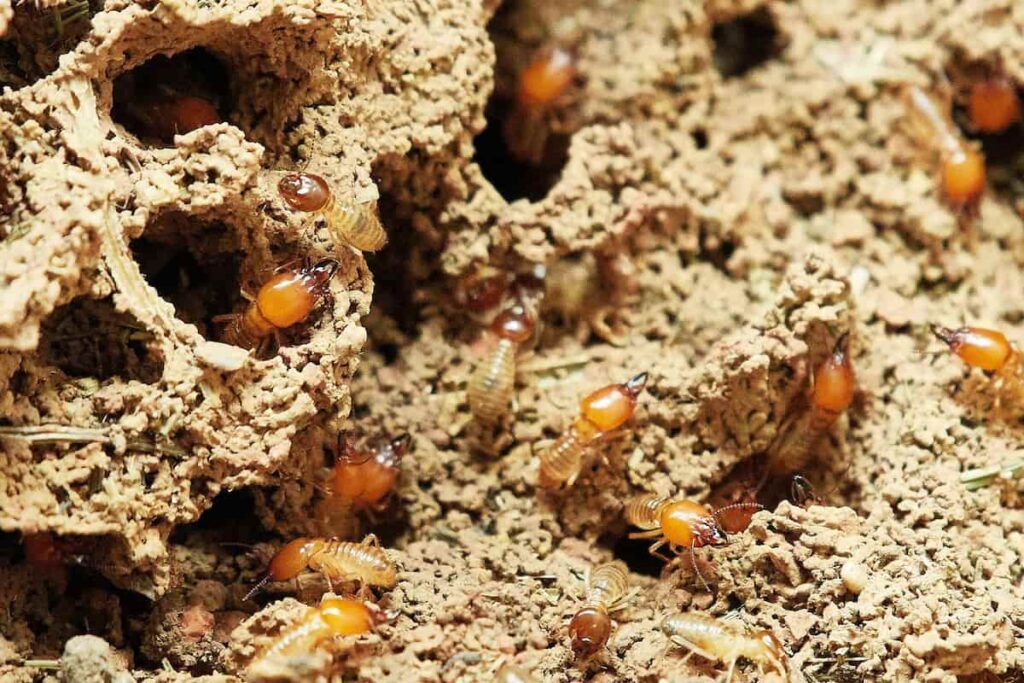
Tips and hacks on how to get rid of termites
Keep an eye out for signs of termite activity
This can include tunnels and mound construction and cast-off faeces or droppings. If you suspect that termites are present, contact a professional pest control company to get them eliminated.
Use natural Termite repellents
Some plants attract termites by producing chemical compounds. You can try mixing equal parts of soybean oil, linseed oil, and neem oil in a spray bottle and using this to protect plants from attack.
Trap the termites with a bait station
Place a bait station near the entrance of any suspected tunnel system or mound in your garden or yard. The station should have several food sources, including crumbs from processed foods, fresh fruits, and vegetables, or even pet food containing treats that are not harmful to humans (like cheese). Termites will travel to the station to feed and eventually fall victim to the trap’s suction cups.
Use a chemical control method if needed
If all else fails and you determine that termites are responsible for damage or destruction in your garden or yard, use a registered pesticide applicator to apply an appropriate dosage of permethrin cream to the affected area(s). Always read the label before using pesticides.
How to get rid of termites permanently in the garden?
- Exposure to sunlight is important too. Termites need direct sunlight to survive, so make sure their nests are kept away from windows.
- Use cardboard traps to remove termites. Cardboard traps will catch the termites and allow you to remove them without hurting them. Just be sure not to leave the traps in the sun for too long, or they’ll eventually burn through the cardboard.
- Use neem oil to kill the termites. Neem oil is very effective at killing off termites. Just be sure not to use it on anything edible or harmful if you want to keep your food safe.
- Use white vinegar to kill the termites. Vinegar is a natural way of killing off termites and is also non-toxic. Just pour it onto the infested area and leave it there until it evaporates. Be sure not to pour it directly onto trees or flowers.
- A mixture of salt and water works great against termites – Make a thick paste with salt and water, then spread it around the perimeter of your property where you think they’re coming in from.
- Cayenne pepper powder or spray can get rid of termites in plants and soil. Termites are attracted to the smell and taste of cayenne pepper, so spraying the plant with cayenne pepper powder or a spray can help to repel termites. Additionally, using a termiticide on the soil around the plant can also help to deter these pests
In case you missed it: Earning 24 Lakh Rupees from Polyhouse Chrysanthemum Cultivation: A Success Story of a Flower Farmer in India
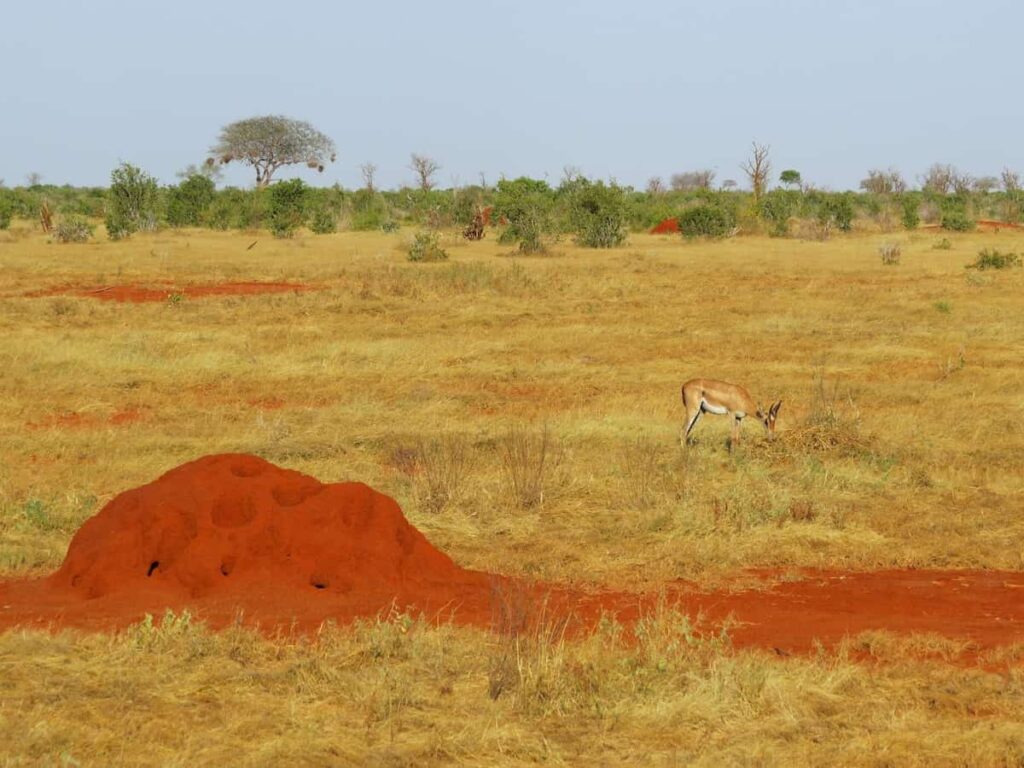
The fastest ways to get rid of termites naturally
- Use a natural control method, such as baiting with food scraps or liquid lubricants.
- Seal any cracks or openings around the base of trees and other plants where termites may enter.
- Apply insecticidal soap or oil to wood surfaces where termites are known to congregate.
- Use a commercial bait product specifically designed for controlling termites.
- One way to treat termites in plants is to use natural methods such as baiting stations or repellents. You can also place wires around the perimeter of your garden to keep them away. You can also try using liquid soap or a horticultural oil mix to deter them from eating your plants.
- Healthy soil is essential for controlling termites. Add compost, organic matter, and plenty of water to your garden.
- You can use various oils, herbicides, or insecticides to deter termites from attacking your plants. Make sure to read the product label before using them to avoid harmful side effects on your plants.
- You can create barriers around vulnerable plants by constructing a fence made of bamboo stakes or plastic fencing material. Always maintain the barriers to prevent termites from entering your garden again.
- Termites typically attack wood coming into contact with the ground, such as tree roots or post bases; look for signs of damage and take action if necessary.
- Mulch is an excellent food source for termites. Not only is it made of cellulose, but it also retains moisture. So simply removing them from around your home can prevent termites from appearing in the first place.
- Bright sunlight is usually fatal to termites. Try clearing brush, roots, landscaping, or UV lighting to expose the colony. Direct sunlight works especially well for wooden furniture that has been affected.
Effective ways to control termites in plants and soil chemically
- You may need to use chemical control to get rid of termites in plants and soil. Many different chemicals can be used for this purpose, including pyrethrum and malathion concentrate. Reading the label before using any chemical is important, as each has specific instructions.
- Keep your property free of weeds and other vegetation that can serve as food or shelter for termites.
- Ensure the soil is well-drained and has a good level of organic matter to help control infestations.
- Apply an appropriate termite control chemical to the exterior of your building before termites can establish colonies inside.
- Inspect the foundations and corners of buildings regularly for a sign of subterranean termite activity, then treat them as necessary.
- Use a soil moisture monitor to determine when it’s time to water plants less frequently to minimize the amount of available moisture for termites; also, avoid using pesticides during extended periods without watering.
- Inspect trees and shrubs thoroughly for signs of damage by termites, then treat any sustained damage with a registered pesticide according to label instructions.
In case you missed it: Greenhouse Farming in Kenya: How to Start, Crops, Construction Cost, Profits, and Subsidy
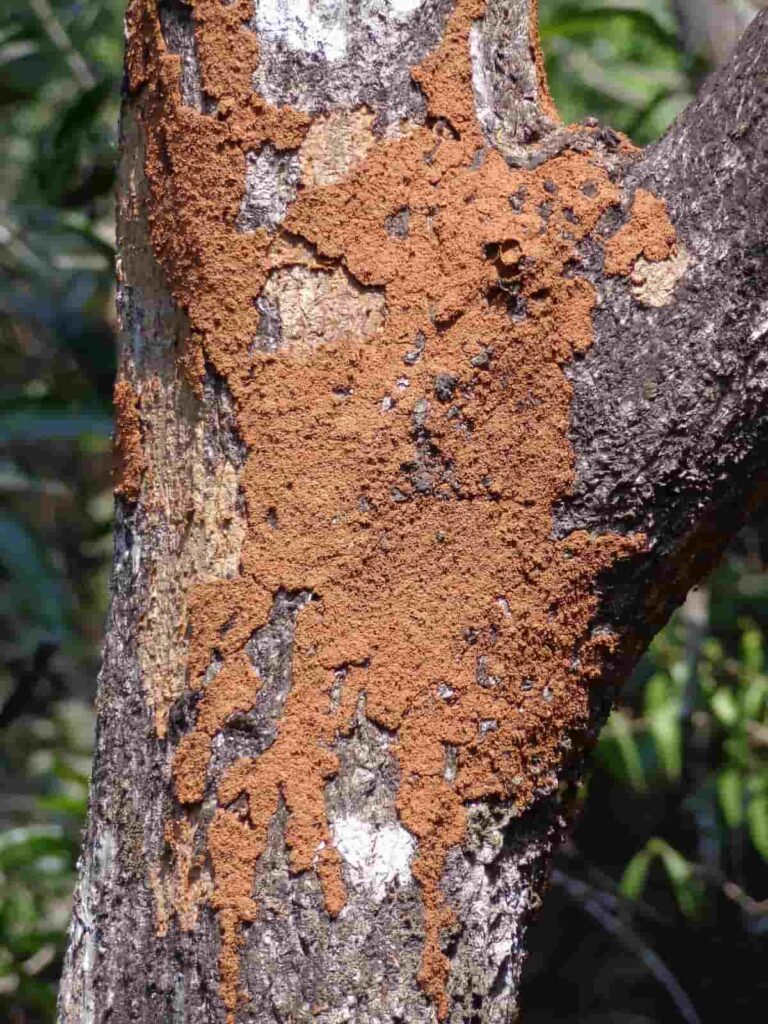
How do termites damage plants?
Termites cause damage to plants by chewing off the tops of the plants or through their tunnels which penetrate the plant’s root system. This soil damage can lead to reduced growth and possible death of the plant. In severe cases, termite damage may also result in the formation of sinkholes. There are different ways to control termites in plants and soil:
Use natural methods
One way to reduce or prevent termite damage is to use natural methods such as baiting with sweet food products or placing strong-smelling chemicals around the base of the plants. Natural methods work best if you catch termites early when they are indoors near their nests.
Use chemical control
If trapping or using natural methods does not work, you may need to use chemical control products. For example, you may use liquid bait, foam insulation treatments, vaporized oils, and insecticides. Read and follow all label instructions carefully before using any pesticide product.
Clear away debris and old roots
Termites prefer a moist environment, so clearing away any debris around your plants will help dry out their surroundings which can discourage them from carrying out any further damaging activities.
What chemicals kill termites in plants?
Many chemicals can kill termites, but the most common ones are listed below.
Diatomaceous Earth (DE)
Termites feed on diatoms, which are microscopic algae. When swallowed, these tiny creatures cut through the gut lining and intestines of termites, killing them. DE is made from water-soluble particles of fossilized diatoms and can be applied as a dust or granular form around the perimeter of a structure where termites are suspected. Use diatomaceous earth (DE) as a soil treatment for controlling termites. DE works by dehydrating the insects, which can eventually kill them. Apply 1 pound of DE per 100 square feet of the treated area.
Chlorpyrifos
This pesticide was developed in the 1950s for use against agricultural pests such as cockroaches and bedbugs, but it is also effective against termites. Chlorpyrifos interferes with the insects’ ability to produce chitin, which is key to their development and survival. It should not be used in areas where people live or work because it can cause serious health problems.
Malathion
Malathion is a broad-spectrum insecticide and is currently registered for use against indoor and outdoor pests such as ants, cockroaches, fleas, ticks, lice, and termites. To treat infested areas, use a synthetic pyrethroid pesticide, such as permethrin. Unfortunately, termites will not develop a resistance to these pesticides over time.
Use thiophanate-methyl
It is a foliar treatment on trees and shrubs for controlling aphids and other soft-bodied insects that feed on tree foliage and flowers. Thiophanate-methyl can be applied using any sprayer, including backpack applicators or hand-held devices. It is also available as granules that can be sprinkled on the surface of the plant canopy or thrown into the air using a slingshot or catapult to make a dusting effect on selected target plants or areas of interest around your property; follow label instructions for use rates and safety precautions when applying this product directly to living plants
In case you missed it: Sheep Farming in Kenya: How to Start, Breeds, Loans, Zero Grazing, and Feeding for Beginners
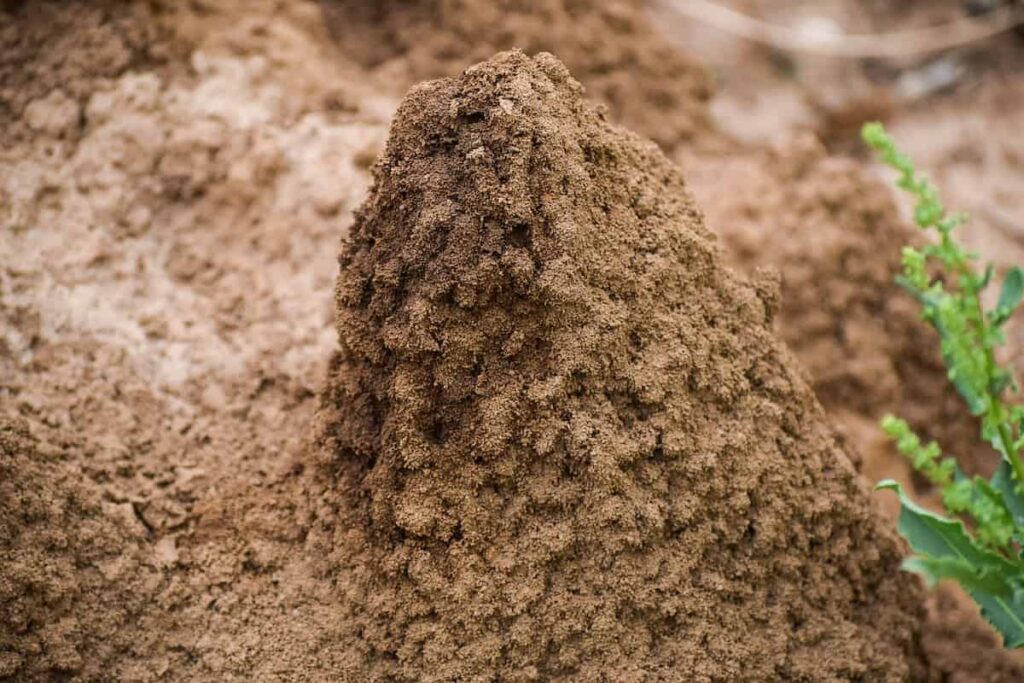
Frequently asked questions about controlling termites in plant (FAQ)
What smell keeps termites away?
Termites hate the smell of pine wood, geranium, and tea tree oil. It has also been found that cloves, cinnamon, and garlic oil can also repel termites.
How can I get rid of termites permanently?
Some of the best ways to get rid of termites are to apply termite-killing products to the outside of your home, use chemicals directly inside your home, install termite traps, and spray your floors and walls with boric acid.
What kills termites instantly?
Orange and neem oils are very effective in treating wood termites. The former contains a compound called d-limonene and can easily kill termites on contact. On the other hand, neem oil is effective after being ingested by termites.
What is the fastest method to get rid of termites naturally?
Boric acid is often recommended for termite eradication. Boric acid is a natural pesticide and usually comes in powder form. You can sprinkle it on the infected area or mix it with water to spray the area.
In case you missed it: Earning 1.3 Lakh Rupees from Coriander Cultivation in Polyhouse: A Success Story from Herbal Farming
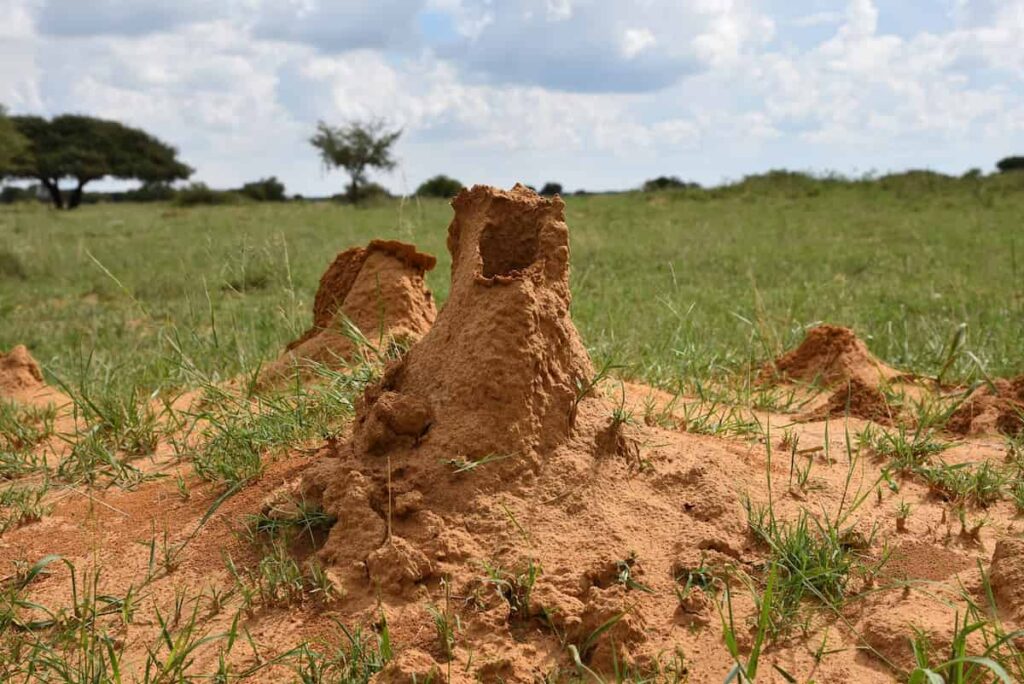
How can I keep termites away or eliminate them from my plants?
Fungal spores can also act as repellents. For example, neem seed kernel extract (NSKE) has been used against termites with good results on trees and field crops. Another solution is adding wood ash, neem leaves, or seeds to the holes dug by termites to repel termites.
What kills termites but not plants?
Another effective way to eliminate termites from your garden is by introducing parasitic roundworms known as nematodes. These roundworms are the best termite repellants because they attack the termites and start eating them.
Conclusion
Plants are one of the most common targets for termites because they are a natural source of food and shelter. Not only do termites eat away at wood, but they can also damage plant roots, causing them to die. So, if you notice your plants looking a little wilted or diseased, it may be because of termites. However, if you have termites in your garden, you may be able to control them using natural or chemical means.
- Types of Pesticides Used in Agriculture: A Beginner’s Guide
- Economical Aquaculture: A Guide to Low-Budget Fish Farming
- 15 Common Planting Errors That Can Doom Your Fruit Trees
- How to Make Houseplants Bushy: Effective Tips and Ideas
- Innovative Strategies for Boosting Coconut Pollination and Yield
- Pollination Strategies for Maximum Pumpkin Yield
- The Complete Guide to Chicken Fattening: Strategies for Maximum Growth
- Natural Solutions for Tulip Problems: 100% Effective Remedies for Leaf and Bulb-Related Issues
- Revolutionizing Citrus Preservation: Towards a Healthier, Greener Future
- Natural Solutions for Peony Leaf and Flower Problems: 100% Effective Remedies
- Maximizing Profits with Avocado Contract Farming in India: A Comprehensive Guide
- Natural Solutions for Hydrangea Problems: 100% Effective Remedies for Leaf and Flowers
- The Ultimate Guide to Choosing the Perfect Foliage Friend: Bringing Life Indoors
- From Sunlight to Sustainability: 15 Ways to Use Solar Technology in Agriculture
- The Ultimate Guide to Dong Tao Chicken: Exploring from History to Raising
- The Eco-Friendly Makeover: How to Convert Your Unused Swimming Pool into a Fish Pond
- Mastering the Art of Delaware Chicken Farming: Essentials for Healthy Backyard Flocks
- 20 Best Homemade Fertilizers for Money Plant: DIY Recipes and Application Methods
- How to Craft a Comprehensive Free-Range Chicken Farming Business Plan
- Brighten Your Flock: Raising Easter Egger Chickens for Beauty and Bounty
- How to Optimize Your Poultry Egg Farm Business Plan with These Strategies
- Subsidy for Spirulina Cultivation: How Indian Government Schemes Encouraging Spirulina Farmers
- Ultimate Guide to Raising Dominique Chickens: Breeding, Feeding, Egg-Production, and Care
- Mastering the Art of Raising Jersey Giant Chickens: Care, Feeding, and More
- Ultimate Guide to Raising Legbar Chickens: Breeding, Farming Practices, Diet, Egg-Production
- How to Raise Welsummer Chickens: A Comprehensive Guide for Beginners
- How to Protect Indoor Plants in Winter: A Comprehensive Guide
- Ultimate Guide to Grow Bag Gardening: Tips, Tricks, and Planting Ideas for Urban Gardeners
- Guide to Lotus Cultivation: How to Propagate, Plant, Grow, Care, Cost, and Profit
- Agriculture Drone Subsidy Scheme: Government Kisan Subsidy, License, and How to Apply Online
- Ultimate Guide to Raising Araucana Chickens: Breed Profile, Farming Economics, Diet, and Care
- Bringing Hydroponics to Classroom: Importance, Benefits of Learning for School Students
- Ultimate Guide to Raising Polish Chickens: Breed Profile, Farming Economics, Diet, and Care
- Ultimate Guide to Raising Australorp Chickens: Profile, Farming Economics, Egg Production, Diet, and Care
- Silkie Chicken Farming: Raising Practices, Varieties, Egg Production, Diet, and Care
- Sussex Chicken Farming: Raising Practices, Varieties, Egg Production, Diet and Care